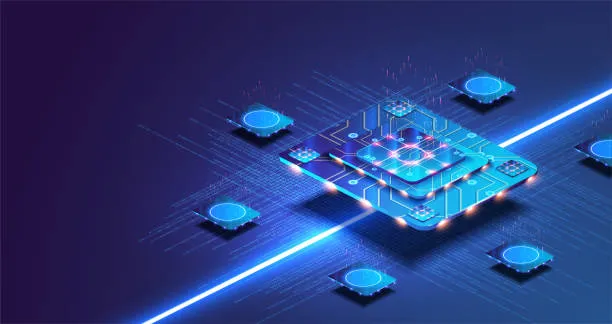The Difference Between CPU and GPU
PUBLISHED
- October 23, 2024
- 12:17 pm
PUBLISHED
- October 23, 2024
- 12:17 pm

Have you ever wondered what the difference is between a CPU and a GPU? These two essential components of a computer may sound similar, but they have very different roles to play in the functioning of your device. In this article, we’ll explore the key differences between CPUs and GPUs and their importance in today’s technology-driven world.
LIKE THIS
The Basics: What are CPUs and GPUs?


First things first, let’s define what CPUs and GPUs are. A CPU, or Central Processing Unit, is the brain of your computer. It performs most of the logical and arithmetic operations that your computer needs to run. Every time you open a program, launch a website, or do anything on your computer, your CPU is responsible for processing that request and sending the necessary commands to the rest of the computer.
On the other hand, a GPU, or Graphics Processing Unit, is responsible for rendering images and videos on your computer. It’s specifically designed to handle the complex calculations required for displaying graphics and animations on your screen. When you’re playing a video game or watching a movie, your GPU is working hard to make sure the visuals are smooth and seamless.
The Key Differences Between CPUs and GPUs


One of the main differences between CPUs and GPUs is the number of cores they have. A CPU usually has a small number of cores (typically between 2 and 16), while a GPU can have hundreds or even thousands of cores. This makes GPUs much more efficient when it comes to processing large amounts of data in parallel.
For example, let’s say you’re editing a video. Your CPU will handle most of the basic operations, such as opening the editing software, playing the video, and saving the changes. However, when it comes to rendering the final video, your GPU will take over. This is because the GPU can process the vast amount of visual data much faster than a CPU, which would struggle with the complex calculations required for video rendering.
Another key difference between CPUs and GPUs is their clock speed. A CPU generally has a higher clock speed than a GPU, which means it can perform basic operations quickly. However, a GPU has a lower clock speed but can process a larger amount of data at once. This makes it more efficient for tasks that require a lot of data processing, such as rendering 3D graphics.
Some Examples


To understand the differences between CPUs and GPUs in the real world, let’s take a look at a few examples.
Gaming:
When you’re playing a video game, your GPU is doing most of the heavy lifting. It’s responsible for rendering the graphics, generating the textures, and animating the characters. Your CPU, on the other hand, is handling the basic operations, such as running the game’s code and sending commands to the GPU.
Video Editing:
As mentioned earlier, video editing is a task that requires both a CPU and a GPU. While the CPU is handling most of the basic operations, such as opening the editing software and saving the final video, the GPU is doing the heavy lifting when it comes to rendering the visual data.
Bitcoin Mining:
Bitcoin mining is a task that requires a lot of data processing. GPUs are often used for this task because they can handle large amounts of data in parallel, making the mining process more efficient.
CPUs and GPUs are both essential components of a computer, but they have very different roles to play. While a CPU is responsible for handling most of the logical and arithmetic operations, a GPU is designed to handle the complex calculations required for rendering images and videos. Understanding the differences between CPUs and GPUs can help you choose the right components for your computer and optimize its performance.









